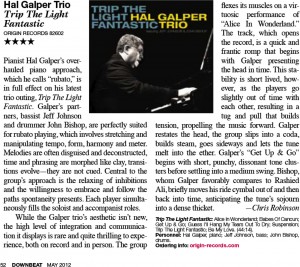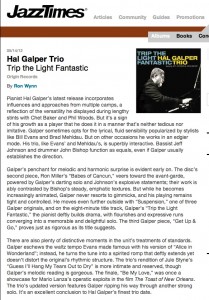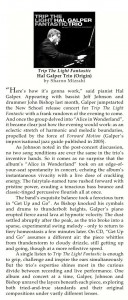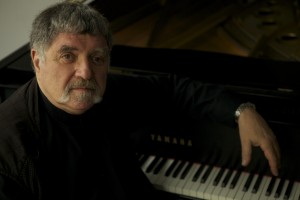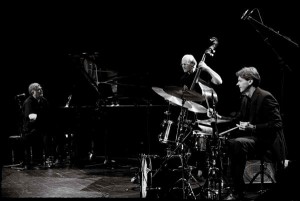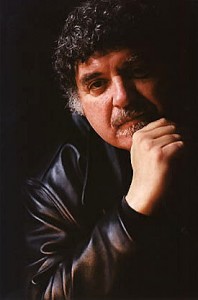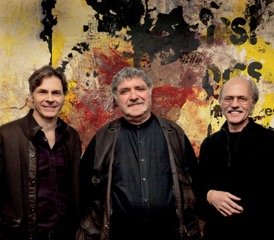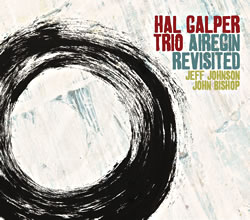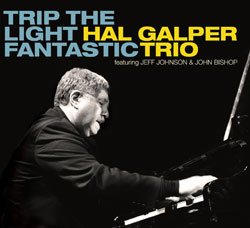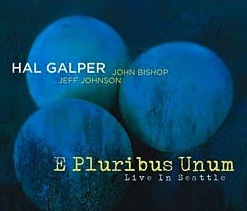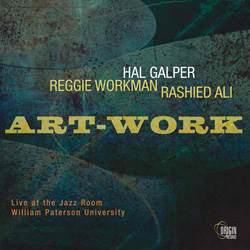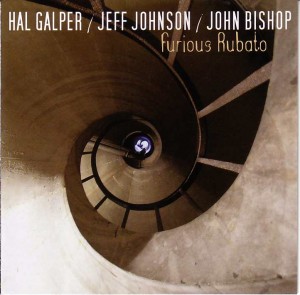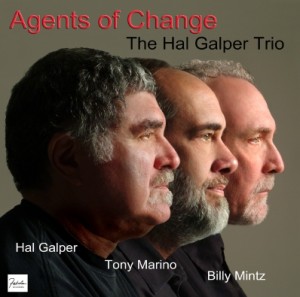Great Quotes
- June 20th, 2013
- Write comment
“ Nothing is real beyond imaginative patterns men make of reality.”
William Blake
*****
“ …the larger world lay not across oceans but within the human mind and heart.”
Greg Iles, “The Quiet Game”
*****
“Many are spoil’d by that pedantic throng,
Who with great pains teach youth to reason wrong.
Tutors, like Virtuoso’s, oft inclin’d
By strange transfusion to improve the mind,
Draw off the sense we have, to pour in new;
Which yet, with all their skill, they ne’er could do.“
William Pope’s “Essay on Criticism,” 1711
*****
“Everybody’s been playing free. Every time you play a solo you’re free to play what you want to play. That’s freedom right there.“
Philly Joe Jones’s comment concerning so-called ‘freedom music.
*****
“If success is measured by acknowledgement, that means you have to go public, and to the extent that you go public you distance yourself from the intimate aspect of your own life. One day you wake up and you realize that this whole aspect of your life has been lost, and you finally understand the cost of what you’ve done.”
From a character in the novel “The Dossier.”
*****
“…it is essential that the study of the history of jazz should include those aspects that are apparently ‘extra musical’ such as sociologic, economic and psychological contexts that are in fact pertinent to the language and tend to condition its substance. One of these is participation. Jazz still relies on the participatory relationship between audience and musician that dates back to it’s African origins. Right from the outset, in Afro -American music ,the audience has been pressed to consider itself as an integral part of the performance experience.”
From Stefano Zenni in the year 2000 publication of Musica Oggi
*****
“When we learn something new, we produce a new thought or make a new connection-we change. We are someone different.”
The Turing Option, Harry Harrison & Marvin Minsky
*****
“It would seem to make sense that every aspiring musician should at some point play drums in order to get a rhythmic clue. Jazz, with it’s time feel derived from poly rhythmic African music, demands that its practitioners of what Mike calls “additive rhythm;” i.e. 2 against 3, 4 against 3, 5 against 4 etc. Once a musician is made aware of these relationships via the drum, major changes take place in their playing. Not only do their their lines begin to flow better and swing, but it becomes impossible for the player to fall out of time.”
From and interview with Mike Longo in Jazz Improv Magazine, Vol. #1, 2000.
*****
Surely you heard the story about the cellist Pablo Casals going mountain climbing with a music lover. About half way up a boulder came down the mountain and barely missed Casals’ right hand. “Good God, Maestro, that was a close call! If that boulder had hit your hand your career might have been over!” Casals shot back, “Yeah, and then I wouldn’t have to play that goddam cello any more.”
*****
“The first night in the band, playing with the great Dizzy Gillespie, I was all over the place with notes. And he just eased over to me and calmly said, “You know, the sign of a mature musician is when you learn what not to play; what to leave out.’ It took me a while to do.
Dizzy loved to teach; he was a natural born teacher. I learned a lot of little things that you wouldn’t get in a music school. The things he would show me, you’d have to practice on the gig. That’s probably what they mean when they say, on-the-job training. I don’t think you could get the full essence of some of the things he showed me by just practicing at home.”
From a Junior Mance interview in January 2002 issue of Allegro Magazine.
*****
THE “ZONE”
I have always maintained that sports at its best and what we do as improvisers have much in common. I was reading the International Herald Tribune while on tour in Europe (excellent sight to have up when you turn on your browser by the way) and there was an article about a specialist who helps athletes gain a proper frame of mind to compete. This particular article was about the New York Yankees’ newest star, Alex Rodriguez. The guy’s name is Fannin and he writes the following: “The Zone is defined as the moment your mind operates completely in the now. You’re on automatic pilot, in the now, your subconscious mind takes over your conscious thoughts. Your pulse quickens. The adrenaline flows. Your eyes double or triple their shutter speed to give you the illusion that everything around you is in slow motion. You possess super strength. You are graceful with uncanny balance and you appear effortless as you move. Your sixth sense of intuition is armed and operating with supreme knowing. You think with clarity and intelligence. You have the feeling of a purposeful calm, when nothing can go wrong. The Score Performance is: S for self discipline; C for concentration; O for optimism (anything can happen); R for relaxation and E for enjoyment.”
A quote from Dave Leibman’s Newsletter
*****
This quote from From Adam Hall’s The Mandarin Cypher is a pretty good subjective description of what “The Zone” feels like while performing.
“Forebrain processing was taking over the gross elements of the task while the primitive creature conditioned itself, the nerve signals triggering the medulla and pouring adrenaline into the bloodstream, the pulse rate and blood pressure rising as sugar flowed in to feed the muscles, the senses increasing in their refinement so that the input of data should receive almost instantaneous assessment by the cortex.”
*****
HOW TO PLAY BEAUTIFUL NOTES
Excerpts from an article in the online version of the 802 Union magazine by violinist Joseph Gallo. Volume 111 No. 2 February, 2011
“So, how do you play beautiful notes one after the other? I suggest you make a project of revisiting your slow movements and (deceptively simple) lyrical pieces.
Let your best sound be your guide, not your earlier teachings! The spaces between the notes are beauty opportunities.
There should be no aural spaces between notes, only the fat sound carried over from the preceding note.
In the beginning stages of your new approach to playing beautifully you must think and listen as perhaps never before.
Know that only you (perhaps with the guidance of a teacher/coach who is sympathetic with this concept) can open new doors to the magic of beautiful sound.”
Though this article was written by a violinist for violinists Gallo’s advice works for any and every instrument. Editor, HG
*****
“…man’s foremost instinct was not self-preservation, but preservation of the image he wanted present to others.”
J.C. Goddard, The Threat Case
*****
“I was a professional when I got to Ghana,” Galeota says. “I had been working with the opera and the ballet and doing all these jazz gigs. I could really play.”
But he soon found out what the locals meant when they told him, “This music is no joke, man.”
One evening Galeota joined an ensemble. “They gave me this little bell part to play. It seemed simple, but I couldn’t play it!” Fortunately,an old man sat behind Galeota and touched him on the shoulder every time he got lost, wordlessly guiding him back to the beat.
“Everything is about community [in Ghana],” Galeota says. “You don’t get to go shed in a practice room until you know what you’re doing. You learn and make mistakes right there in the group, in front of your peers. You feel very vulnerable.”
This experience informs Galeota’s perennially popular classes and ensembles. “There’s no room for ego,” he says. “I don’t teach with handouts or written music; it’s strictly oral tradition. I sing the rhythm and make the students clap the pulse and tell me where ‘one’ is.” Once students find the beat,Galeota calls “switch” and has them sing the rhythms with syllables analogous to a rhythmic solfège.
“I have them sing everything first before they pick up an instrument. That way they have internalized the music before they try to present it.” Galeota stresses that these approaches enhance rather than replace Western learning techniques.
A focus on artistic intangibles gives Galeota’s classes a unique vibe. “An African ensemble is only as strong as its weakest player,” he says. “And the better players see it as their responsibility to bring novices up to their level. The music is very egalitarian.”
Students enjoy this collaborative atmosphere. Galeota says this frees them from ego, which is really a by-product of insecurity, and leaves them feeling more secure as musicians. It’s no wonder his classes are so popular.
… “[In Ghana] music doesn’t belong to any one person; it belongs to everyone and is part of life. You’ll see guys working on a roof and they’re all singing.”
Once students understand that in Ghana, music is the lineage of family, a means of public satire, and a form of history keeping, Galeota urges students to consider what their own music means to them.
From an article about Joe Galeota, by Adam Renn Olean, Berklee Today (Summer 2013)
*****
“Thought is the enemy of flow” Vinnie Colaiuta

